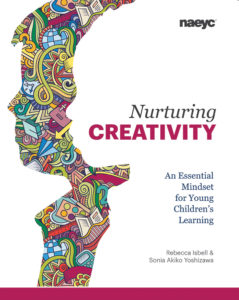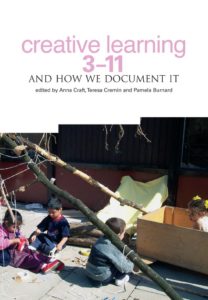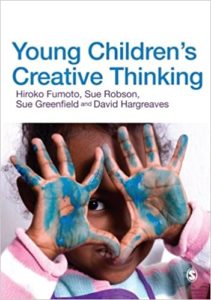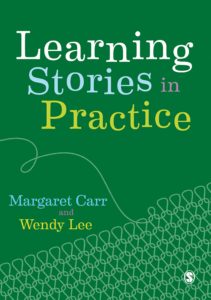
Nurturing creativity
Rebecca Isbell and Sonia Akiko Yoshizawa (20:1.6), National Association for the Education of Young Children (NAEYC)
The NAEYC offers us a well organised and, at a basic level, comprehensive account of creativity in young child’s learning. The book is generously illustrated with photographs, diagrams and lists, and stories from nurseries. The chapters are concluded with questions to prompt reflection for those working with young children. This is an excellent introduction, and there are lots of practical ideas to be gleaned.

Learning through woodwork
Pete Moorhouse (20:1.7), Routledge
Pete Moorhouse is the UK’s leading authority on woodwork in early years education. He emphasises the significance of woodwork for characteristics of effective learning and, in particular, creativity and critical thinking. In fact, Pete Moorhouse is currently working on a book about creativity.
The section on the history of woodwork in the education of young children is fascinating, and especially useful is the substantial practical section that covers materials to use and advice on tools. The reader may well be introduced to tools not met before. The book is to be recommended to those who already do some woodwork in the nursery because it will almost certainly suggest improvements, but it will give all the necessary information and encouragement to those who have not yet begun to offer this activity to the young.
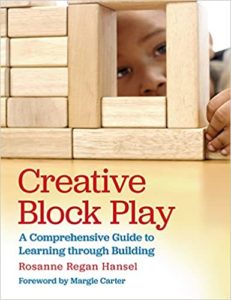
Creative block play
Rosanne Regan Hansel (20:1.7), Red Leaf Press
This book is another from the United States. Unit blocks, that are familiar to many working in early years, are recognised as being invaluable for the development of creativity because of their open-endedness. The author does not allow the reader to forget that there are all sorts of other types of block such as hollow blocks, bamboo blocks and even the tangram, as well as accessories and loose parts that can be productively used with blocks. In spite of the acknowledged value of blocks, often the block area is neglected by staff and children. Therefore, a prompt to look again at this resource that should be part of our continuous provision is helpful. This beautifully presented publication will inspire creativity.
Creative learning 3-11 and how we document it
Edited by Anna Craft, Teresa Cremin and Pamela Burnard (2008), Institute of Education Press
This is an important volume bringing together essays by a range of writers from and about countries across the globe. Although the studies are theoretical, they are of great practical significance; although they cover children of ages up to eleven years, they are of interest to those working in early years. The reader is taken on a journey from the beginning, with Piaget and Vygotsky, through attempts to define and understand creativity, to the issues of documenting and monitoring children’s creativity. Inevitably, a book with international contributors alerts us to the significance of culture for creativity.
Young children’s creative thinking
Hiroko Fumoto, Sue Robson, Sue Greenfield and David Hargreaves (2012), SAGE Publications
This book comes from a Froebelian background and is written by academics at Roehampton University. There are three distinct parts to this work: creative thinking, social relationships and early childhood practice; exploring perspectives in early childhood research; and experiences of young children, parents and practitioners. Although this all sounds rather theoretical, and indeed it is, there are practical implications, and they are made quite explicit in the book. Like the volume reviewed immediately above, this one also deals with the identification and nurture of
children’s creativity.
Learning stories in practice
Margaret Carr and Wendy Lee (2019), SAGE Publications
This is the most exciting book that the present reviewer has found this year. Having delighted in earlier books, including Learning stories – constructing learning identities by the same authors, Learning stories in practice was compulsory reading. This sequel is practical and seeks to answer questions about learning story assessment practices. Challenging a tick box approach to assessment is assumed, and the use of learning stories explicated and championed. This is a powerful guide to taking children’s learning seriously, such that we do not reduce assessment to a narrow field and to mere statistics, nor lose focus, neglecting the all-important documentation of children’s progress. It is a book to ‘read, mark, learn and inwardly digest’.

